Quality Over Quantity

Doug and Amber Timmermeyer’s home looks like others on their Third Ward block.
From the front, Doug and Amber Timmermeyer’s home looks like others on their Third Ward block. Built in 1940, it’s a modest brick cottage with three steeply pitched gables forming the front facade, at the center of which is a covered front porch with a neat brick archway curling over its steps. When the couple decided to remodel their home in 2018, keeping such markers of the local style was critical. “Houston’s known for tearing down history,” said Doug. “We didn’t want to change the face of the neighborhood because it’s an older neighborhood, and part of the reason why we moved here was because we loved the older homes.”
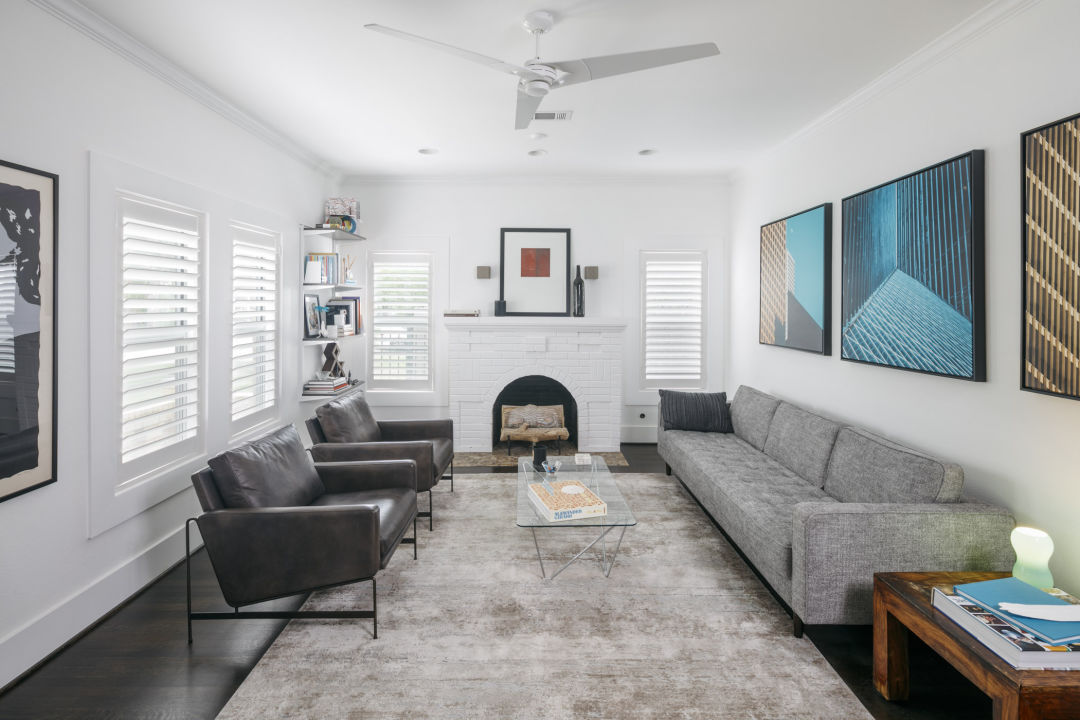
The couple bought theirs in 2003, a compact 1,360-square-foot home with many of the hallmarks of its era, like the original hardwood floors, high ceilings, and interior archways, still intact. Less charming was the layout, with rooms that felt tight and compartmentalized. The house reflected how people lived 80 years ago rather than today, from the too-small kitchen to the cramped bathrooms to the driveway that fit only two cars stacked one behind the other. This made it so, depending on who was leaving first in the morning, someone often had to move one car to get the other out. “I’m sure our neighbors got tired of seeing me in my pajamas doing that,” said Amber.
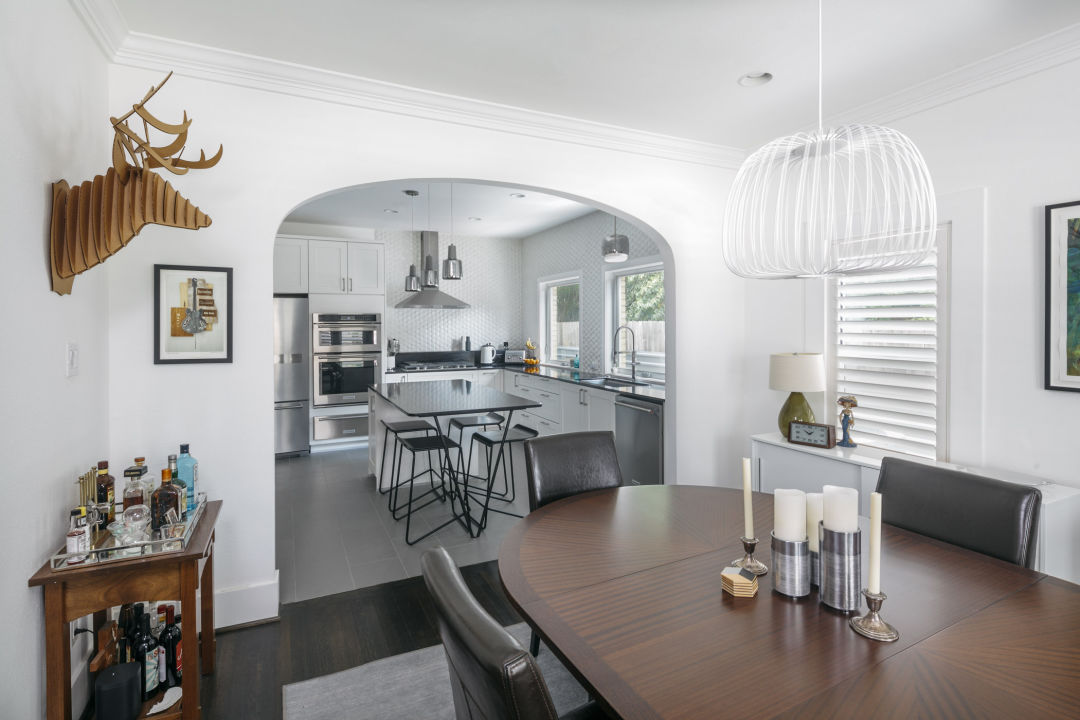
Like many new homeowners, Amber and Doug touched up paint and made cosmetic tweaks, but a major overhaul wasn’t in their budget yet. They bided their time by going on annual house tours hosted by the Houston American Institute of Architects, and saved the cards of people whose work inspired them. In 2006, a small-scale whole-house renovation designed by Mark Schatz and Anne Eamon, another husband-and-wife team who together make up m+a architecture studio, caught their eye, and they saved the firm’s information. “It was very creative,” said Amber. “Some of the things that they came up with to make the space more usable really resonated with us.”
The couple—he’s now a creative director at BrandExtract and she’s in marketing at JE Dunn Construction—reached out to Mark and Anne more than a decade later, when they were finally ready to remodel. Turns out, they saved the right business card. Schatz is a champion of thoughtfully designed, small-house living in Houston. A city where, as Schatz said, “the trend is still bigger is still better.” Houston has the largest houses in the country, according to a New York Times analysis of 45 cities nationwide. The city’s older homes often get torn down to make space for something built to the lot lines, or become unrecognizable by drastic moves to enlarge them.
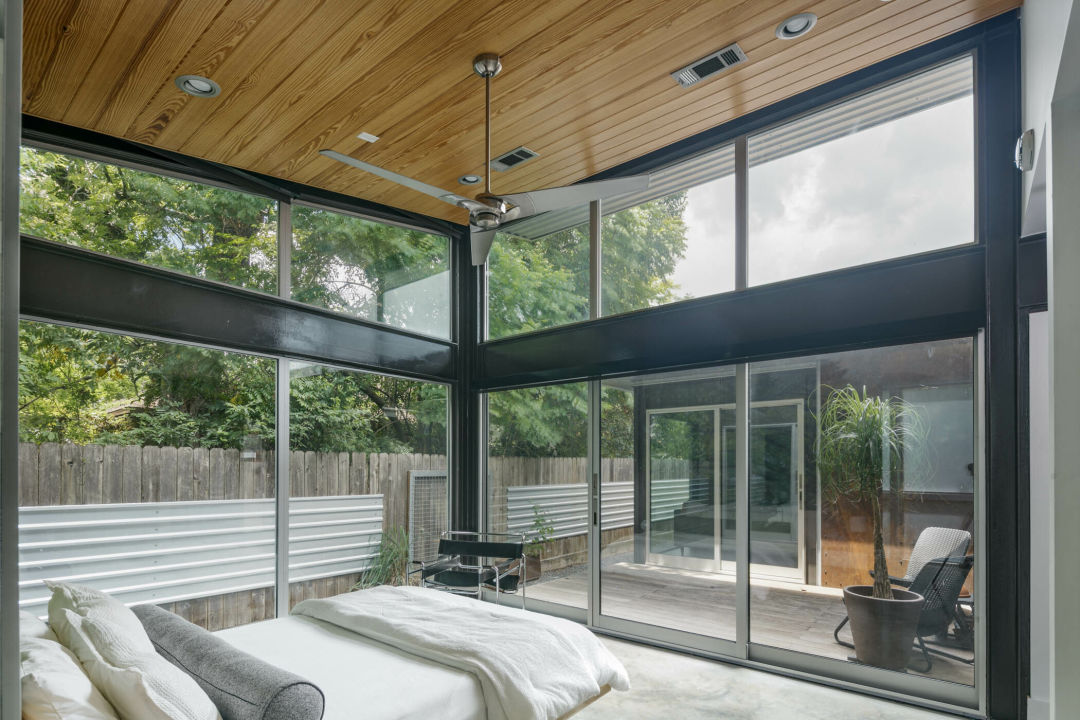
“A lot of times, when folks do an addition to an older house, they’re just adding square footage, so they’ll stick something on the back. We have that as a real problem here,” said Schatz, pointing to the Houston Heights neighborhood as an example. “Homes from the 1910s and 1920s—gorgeous Queen Annes or cottages or Craftsman-style—will get this giant box stuck on the back that looks like it’s trying to eat the house…. There can be a poverty of imagination when it comes to doing an addition to an older home.”
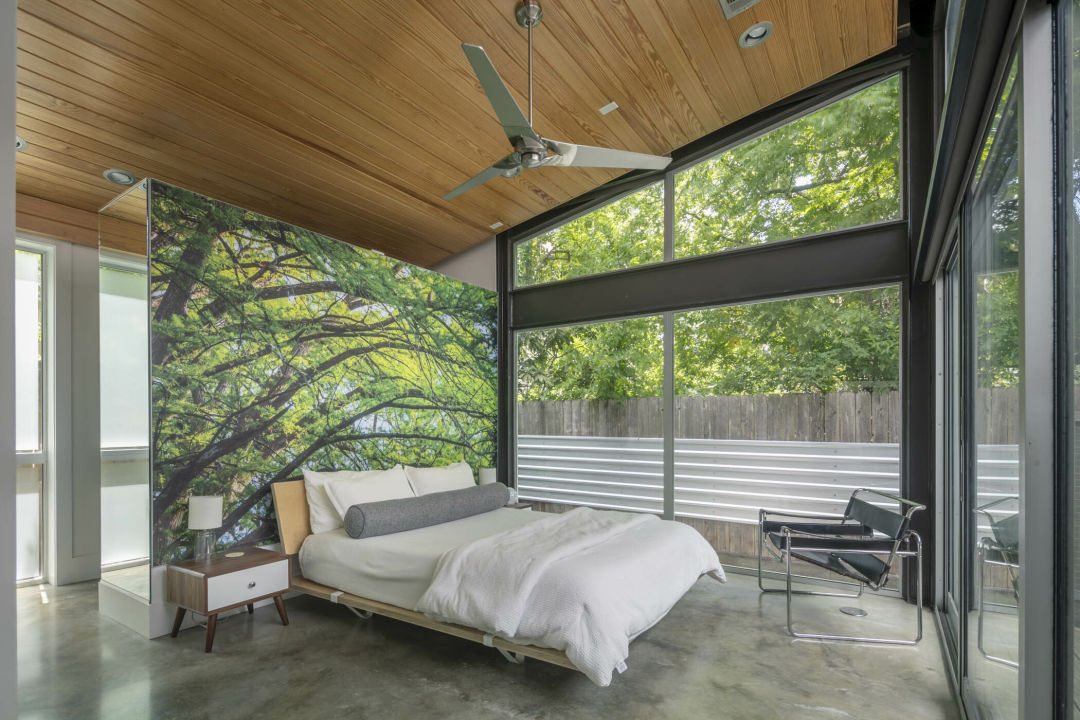
When the Timmermeyers contacted m+a, they thought they might just need to add a bedroom. But the architects presented a more holistic remodel, starting with the front lawn and moving through the entire property to the back. Now, custom concrete garden walls frame the front yard and line the walk. “There’s a modern undertone to the landscape that’s carried through with the materiality of the house,” said Schatz. “But you’d never guess from the street that there was this steel and glass box in the back.”
They kept the facade and the two front (living and dining) rooms. New windows replaced the old ones that were previously painted shut. “It’s really nice to be able to open the windows,” said Doug, noting how Schatz intervened with “little things like that, which we hadn’t thought about in a long time.” Beyond the front rooms, they relocated and enlarged the kitchen, with a new, yet 1940s-era-appropriate archway, nodding to the home’s original vernacular.
At the rear of the house, the three bedrooms were streamlined, with two receiving bigger closets—key in older houses that lack storage—and the two bathroom layouts rejiggered for more comfort. Schatz removed walls in the third bedroom and converted it to a private lounge with its corner “peeled back,” and added two large expanses of glass, one a sliding door that opens to a private patio, where the couple hosted movie nights during the pandemic.
Schatz then extended the center hallway into a new “connector” section. This has an exterior door to the driveway, which was also enlarged to fit the cars side-by-side under a steel carport. The connector also acts as the couple’s daily informal entrance, marked by an entry table and mirror mounted on a wall painted with the Polaroid stripe (a nod to Doug’s love of photography). This area has a sliding polycarbonate door, and through it is the major modern addition: a glass and steel cube that now hosts the couple’s generous primary suite, for a total addition of just 440 square feet.
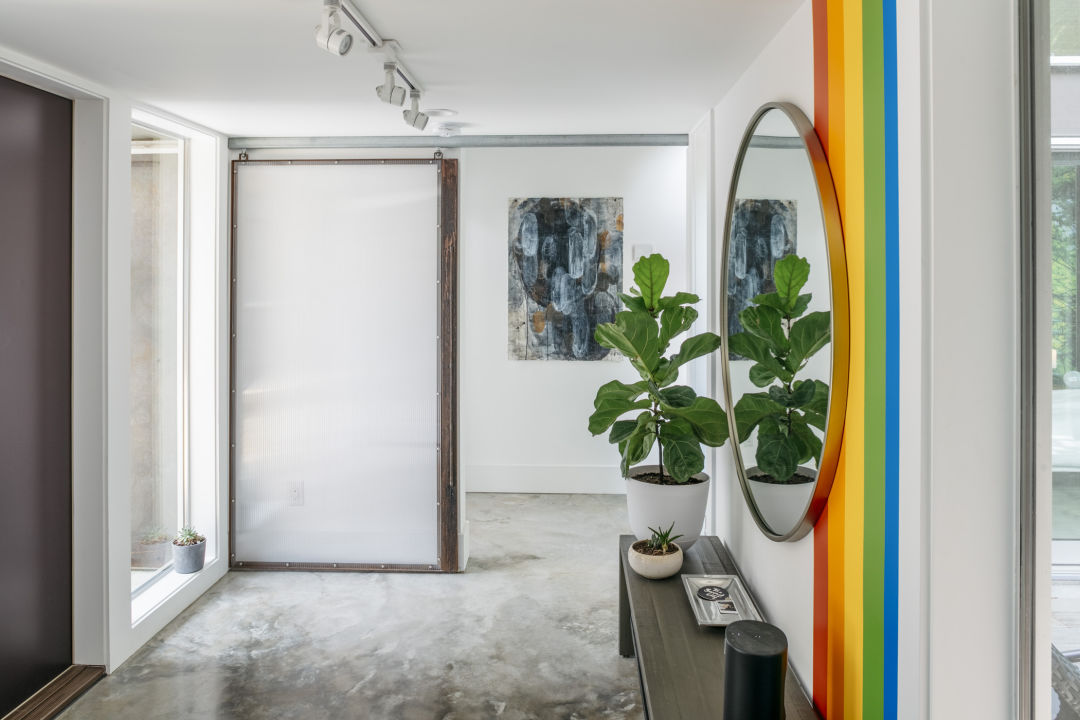
“When you walk in their house today, you still have the very conventional layout from the 1940s in the front, but all of a sudden the view extends all the way to the back,” said Schatz. “It’s like that scene out of The Wizard of Oz, when Dorothy opens the door, and everything goes from black and white to color.”




